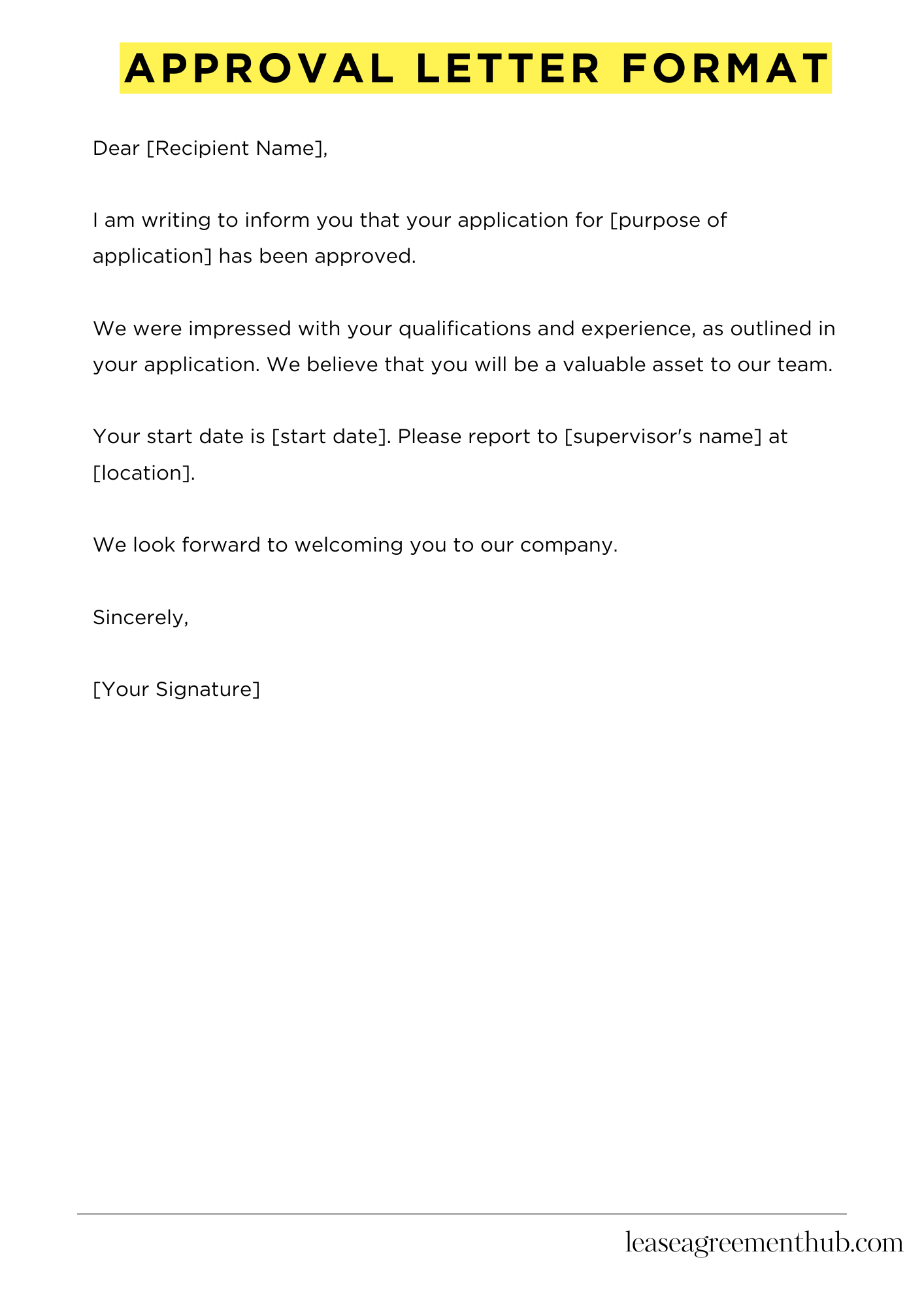An approval letter format is a structured way to communicate consent or agreement. It is often used in professional settings to confirm that a request has been accepted. This format ensures clarity and professionalism in the communication process.
In this article, we will provide various templates and examples of approval letters. These samples will help users easily craft their own letters. Whether you need to approve a project, a leave request, or a proposal, we’ve got you covered.
With our easy-to-follow formats, writing an approval letter will be a breeze. You can customize these samples to fit your specific needs. Let’s make the task of writing approval letters simple and efficient.
Approval Letter Format
[Your Name]
[Your Address]
[City, Postal Code]
[Email Address]
[Phone Number]
[Date]
[Recipient Name]
[Recipient Title]
[Company/Organization Name]
[Address]
[City, Postal Code]
Dear [Recipient Name],
I am writing to inform you that your application for [purpose of application] has been approved.
We were impressed with your qualifications and experience, as outlined in your application. We believe that you will be a valuable asset to our team.
Your start date is [start date]. Please report to [supervisor’s name] at [location].
We look forward to welcoming you to our company.
Sincerely,
[Your Signature]

How to Write Approval Letter Format
In the world of business and personal life, approval letters are essential documents that formally communicate your consent or acceptance of a proposal, request, or application. Whether you’re approving a loan, a project plan, or a leave request, a well-written approval letter is crucial for clarity, professionalism, and legal purposes. This guide will walk you through the essential elements of a standard approval letter format, ensuring you can craft effective and persuasive letters.
1. Header and Salutation
Start your approval letter with a clear and professional header. This includes your name, address, contact information, and the date. Below the header, include a formal salutation addressing the recipient by their name and title. For example, “Dear Mr./Ms. [Recipient’s Name].”
2. Reference Number and Subject
To ensure clarity and traceability, include a reference number if applicable. This number helps both you and the recipient easily identify the specific request or proposal being addressed. Immediately following the reference number, clearly state the subject of the letter in a concise and informative manner. For example, “Subject: Approval of Loan Application.”
3. Statement of Approval
This is the heart of your approval letter. Clearly and concisely state your approval of the request or proposal. Be specific about what you are approving and any conditions or limitations. For instance, “This letter confirms our approval of your loan application for [amount] at an interest rate of [percentage].”
4. Additional Information and Next Steps
If necessary, provide any additional information or instructions related to the approval. For example, you might include details about the next steps, deadlines, or required documents. If there are any specific actions the recipient needs to take, outline them clearly.
5. Closing and Signature
End your approval letter with a professional closing, such as “Sincerely” or “Best regards.” Leave a few lines for your handwritten signature and then type your full name. If you are sending the letter electronically, include your typed name and title.
By following this format, you can create approval letters that are clear, concise, and professional. Remember to tailor your letter to the specific situation and audience. Always proofread your letter carefully before sending it to ensure it is free of errors. A well-written approval letter can strengthen relationships, build trust, and ensure a smooth and successful outcome.
Related: